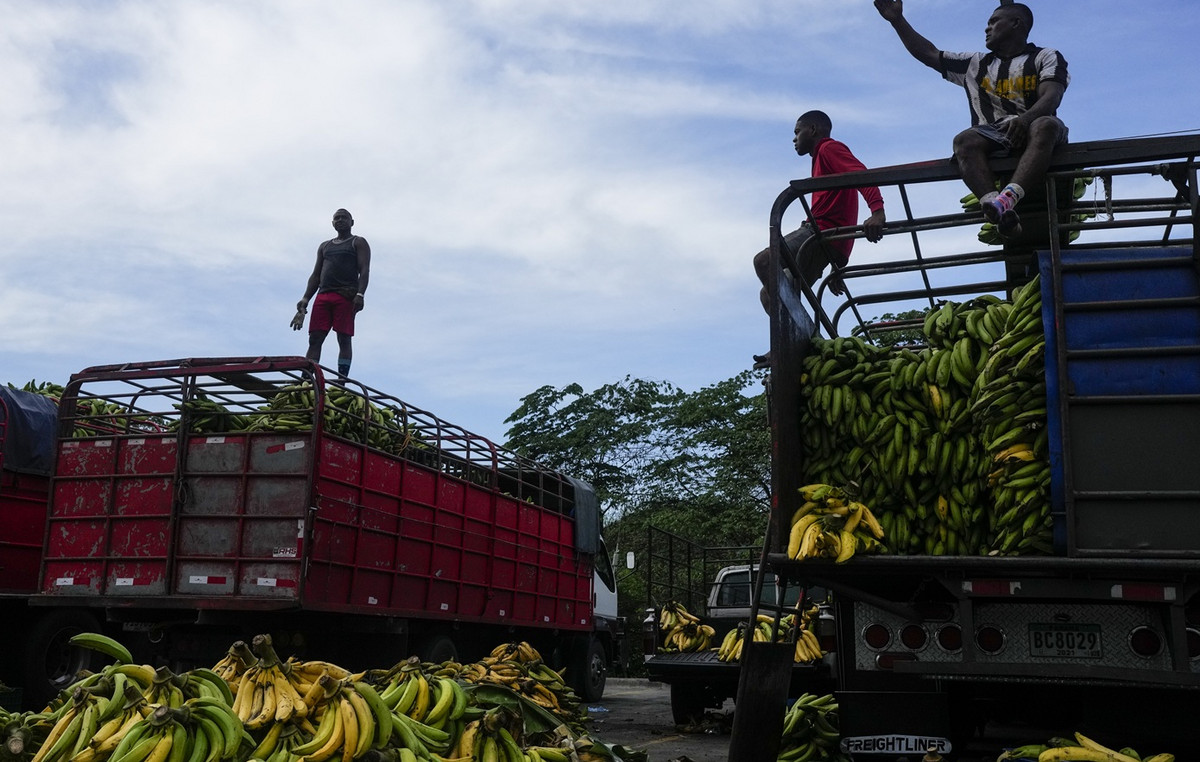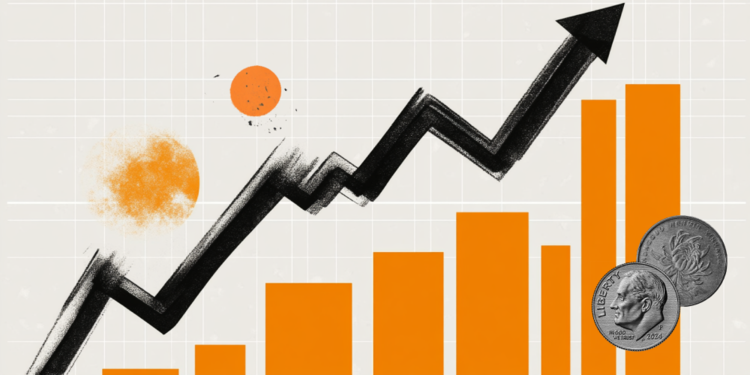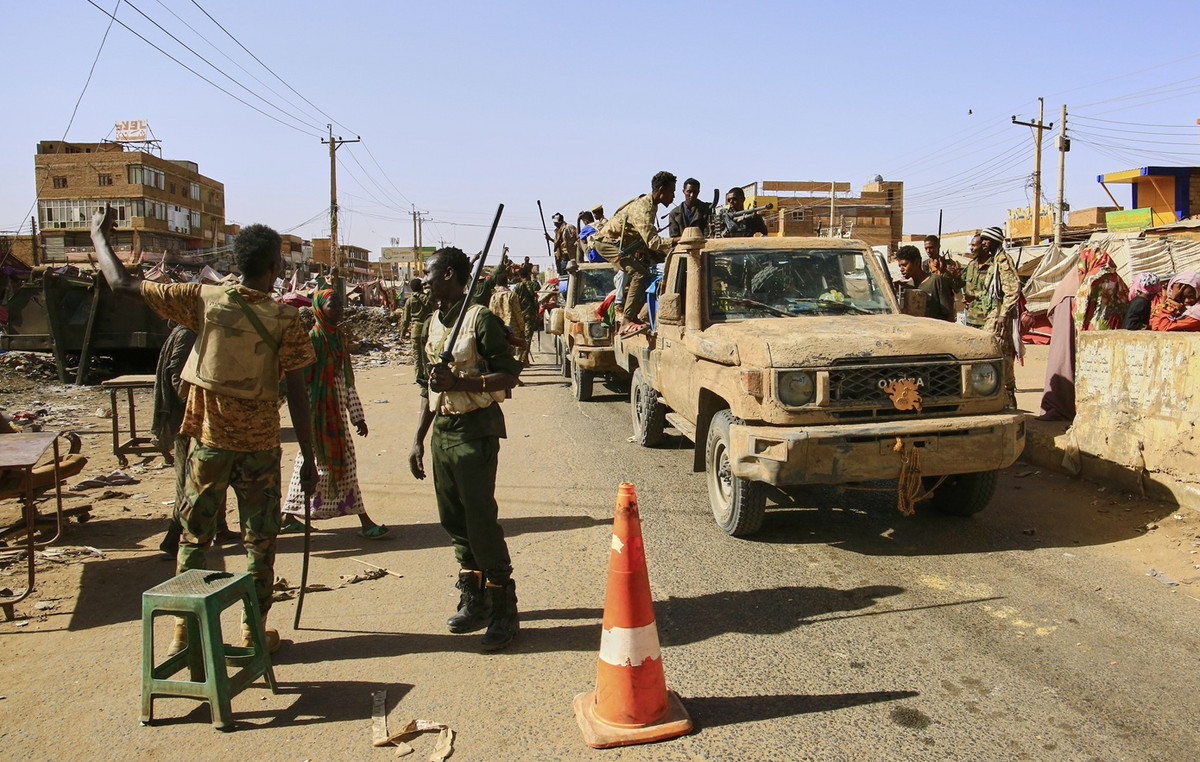The year 2022 began with a strong tension in international politics, around the possibility of the Russia invade the Ukraineand the possible response of United States and its allies, especially European countries, in this scenario.
Diplomatically, the situation in the region still seems far from being resolved, despite attempts at negotiation by the various actors involved.
However, for experts consulted by the CNN Brasil Businessthe crisis in Ukraine should not have significant impacts on the international economy or that of Brazil.
This is because, in the opinion of analysts, there are more relevant economic threats today: the movement of interest rate hikes in the United States that should start in March, the apparent slowdown in the economy of China and, to a lesser extent, the possibility of the emergence of new variants and worsening in the pandemic.
Compared to these elements, only a significant increase in the Ukrainian situation, such as an effective invasion, would have a greater impact, which, for Paulo Feldmann, a professor at FEA-USP, is currently “unlikely”.
International economy
Feldmann says that, so far, the crisis has not had a significant impact on the world economy, contributing much more to a scenario of “apprehension, a fear, but in fact nothing has happened”.
The professor assesses that the paralysis of the situation, with a blocked diplomatic path and the Europe still afraid to support the United States more emphatically against Russia, limits the effects of the crisis.
For Livio Ribeiro, a researcher at Ibre-FGV, the European fear is linked to a greater risk scenario on the continent if the situation in Ukraine worsens. He asserts that Europe would have more to lose than other regions, and that for the region, the current tension is only less of a risk than the interest rate hike in the US.
“Russia has used the gas supply in Europe as a weapon in this scenario, which directly impacts energy prices and inflation in Europe”, he says. The country supplies about 40% of all natural gas consumed on the continent, which gives it a great impact if this supply is interrupted.
Ribeiro states that “it is a particularly bad issue for Europe, and it impacts a sector of the European economy, that of energy, which has been very affected recently and influences inflation, especially in the short term, and the performance of the ECB [Banco Central Europeu]”, which could pressure the authorities in relation to interest rate hikes.
Going beyond the situation in Europe, Ribeiro says that the tension scenario generates an aversion to risky investments, which consequently affects asset prices seen as volatile or less safe.
Even so, he assesses that, globally, the situation in Ukraine still lags behind the interest rate hike in the United States and the Chinese situation and the pandemic, considering the effects on the economy.
Ian Cao, CIO at Gama Investimentos, says the current strain comes at a time when most major economies are dealing with high levels of inflation. Ukraine is an important country in the commodities sector, being a major producer of wheat and corn and a transport channel for oil and gas.
Prices for these products have already risen due to the possibility of conflict, but only modestly. If the rises worsen, however, countries “must suffer. But it is difficult to anticipate these events.”
Furthermore, he says the diversity of factors influencing asset prices makes it difficult to isolate the specific contribution of each element, “especially in a scenario with things structurally more important to the dollar.”
“The background is a positive commodity cycle, which helps Brazil, but perhaps the most important development is that after nearly a decade of fiscally boost policy, we are in a reversal in the United States,” he says, citing the position of Federal Reservethe US central bank, to raise interest rates in 2022 to fight inflation.
For Feldmann, the economic impact would only be significant in the event of conflict. The market also seems to have reduced fears with the current scenario, as pointed out by the VIX index, which tries to measure volatility in investments, well away from crisis levels reached in 2008 or at the beginning of the pandemic, above 80 points. On Tuesday (1st), he closed and 21.96 points.
“If Russia invaded, no matter how low the chance is, then it becomes a problem, because the Europeans will have to protest against Russia, and with that the gas supply will be harmed there already”, says the professor.
In this scenario, Europe’s need to look for other suppliers would make the prices of the Petroleum and natural gas at an accelerated pace.
At the same time, the possibility of the United States responding with an intervention “would put the economy in a panic, slowing down the pace of activity in the world economy. It would be a very serious crisis, as we have not seen for many years.”
According to Cao, it is difficult to estimate the potential size of this event.” In the vast majority of likely scenarios, the effect is small. The vast majority of events like this create a tense environment, but then they settle down and things get back to normal. If it really did generate a war, then the impact is infinite, but it’s unlikely”.
Petroleum
Ian Cao says that Ukraine is intensifying an existing process of rising oil prices. “It is a relevant country in terms of energy, so it can always lead to price hikes, which already generates a more practical effect on the economy. Russia is also important thinking about oil, gas”.
On the other hand, he says that it is always dangerous to anticipate this type of movement in the commodity, as over-pricing can occur and, if the situation is lighter, the price will fall.
Specialists consulted by CNN Brasil Business also point out that the recent rise in oil, reaching US$ 90 a barrel, is linked much more to issues that already existed in 2021 than to the Ukrainian situation.
The first is the mismatch between oil supply and demand, with the low price in 2020 discouraging investments that generated an inability of the sector to meet the high demand with the economic recovery.
The second is the position of the Organization of Petroleum Exporting Countries (OPEC) to maintain a slow pace of resumption of production to pre-pandemic levels. As it brings together the main producers, supply remains low and prices high.
Even before the crisis in Ukraine, banks already predicted that oil would end 2022 close to US$ 100. With this, the contribution of the current tension to prices should be small, unless the scenario seen as unlikely of invasion conforms.
Cao also says that other upward movements in commodities should not impact the monetary policies of the countries, since the rise in prices in these products already slows down the economy and because the problem is not structural, that is, more lasting.
In the case of the US currency, a risk aversion scenario is traditionally favorable, as investors tend to migrate to the dollar due to its security. This is what happened, for example, at the beginning of the pandemic.
In 2022, the DXY index, which compares the dollar with a number of currencies from other countries, has been rising, but Cao says it is difficult to link this exclusively to the situation in Ukraine, as the prospect of high interest rates in the United States also attracts flows. investment for the country, appreciating the currency.
“The Fed has made it very clear that it will raise interest rates, and this is more important for the balance of currencies in the medium term. A risk aversion effect is normally the devaluation of emerging currencies, search for safer assets, but in the current scenario it is difficult to be able to isolate effects”, he says.
At the same time that the risk aversion scenario harms emerging markets, such as Brazil, Livio Ribeiro believes that this movement is still neutralized, and surpassed, on the other hand, the migration of investments to shares in the United States – with the prospect of a high interest rates there – for markets seen as discounted or high sectors, in the case of commodities.
This has helped a number of emerging countries, such as Chile, South Africa and Brazil itself, all of which have appreciated their currencies against the dollar. In January, the real rose 4.8%.
“There has been a return in commodity prices, including oil and iron ore, thanks to China, and a rise in energy and gas prices. This pushes commodity-exporting countries into a stronger position,” he says.
“Occasionally it has been advantageous, not only for Brazil. But this movement can reverse and harm, depending on the evolution of things. There are numerous shocks at the same time, which change in size and direction, the end result of this affects the coin,” he says.
For the economist, only if risk aversion increased a lot, with a significant escalation in Ukraine, it would start to weigh more than the current favorable flow to these countries. Again, though, this seems unlikely.
Livio Ribeiro says that, for Brazil, the situation in Ukraine is still economically “something very exotic, it has almost no direct effect, and ends up being a very indirect channel”.
He assesses that, directly, Brazil may face two main consequences. The first would be a drop in trade with its second-biggest trading partner, the eurozone, if the situation in the region remains tense or worsens.
The second would be a rise in the price of fertilizers, which could spill over into food, as the country’s largest supplier, Belarusis involved in the Ukrainian crisis, with prices for this product soaring around the world.
On the other hand, economists from Genial Investimentos stated in a report that as Ukraine and Russia are the fourth and fifth largest corn exporters, respectively, tensions involving the countries may open a space in the exports of the product here in the country.
Brazil has the potential to occupy this space, which would be favorable for the agribusiness. At the same time, directing these products abroad, with higher demand and prices, would also raise prices internally, harming the population and affecting the inflation.
Paulo Feldmann, on the other hand, assesses that the China’s economic situation in particular, it may have a “much greater impact on Brazil than Ukraine”.
“It’s a bigger problem if it’s slowing down, because it can buy fewer commodities, or if it chooses to diversify its sources of suppliers internally and externally”, he says.
He also states that the rise in interest rates in the United States should have a major impact, potentially with the withdrawal of investments in the Brazilian market, driven by apprehensions about the fiscal situation and the elections. “With that, the dollar would rise, and then it would impact inflation.”
Source: CNN Brasil
I am Sophia william, author of World Stock Market. I have a degree in journalism from the University of Missouri and I have worked as a reporter for several news websites. I have a passion for writing and informing people about the latest news and events happening in the world. I strive to be accurate and unbiased in my reporting, and I hope to provide readers with valuable information that they can use to make informed decisions.







